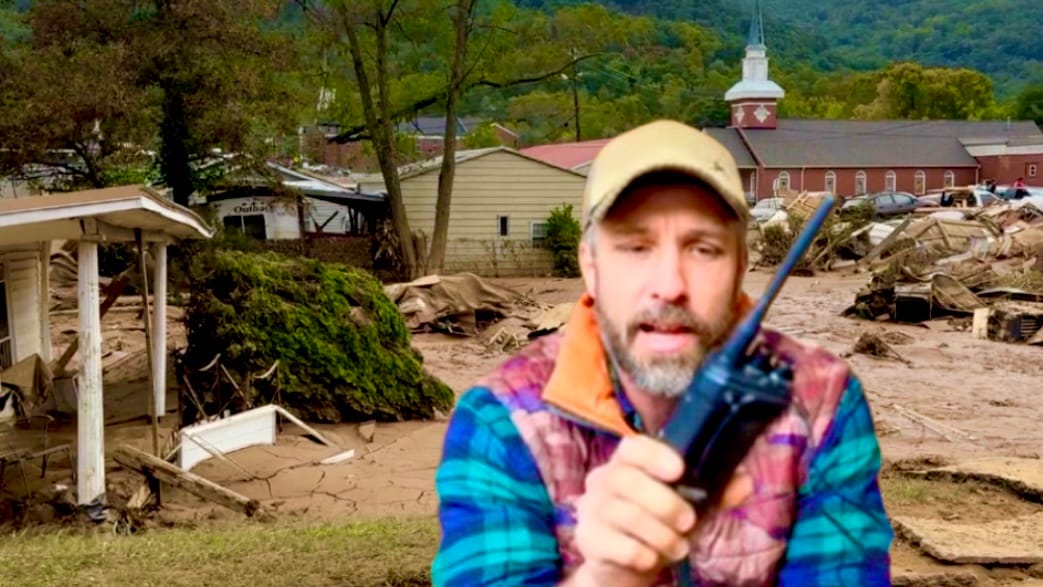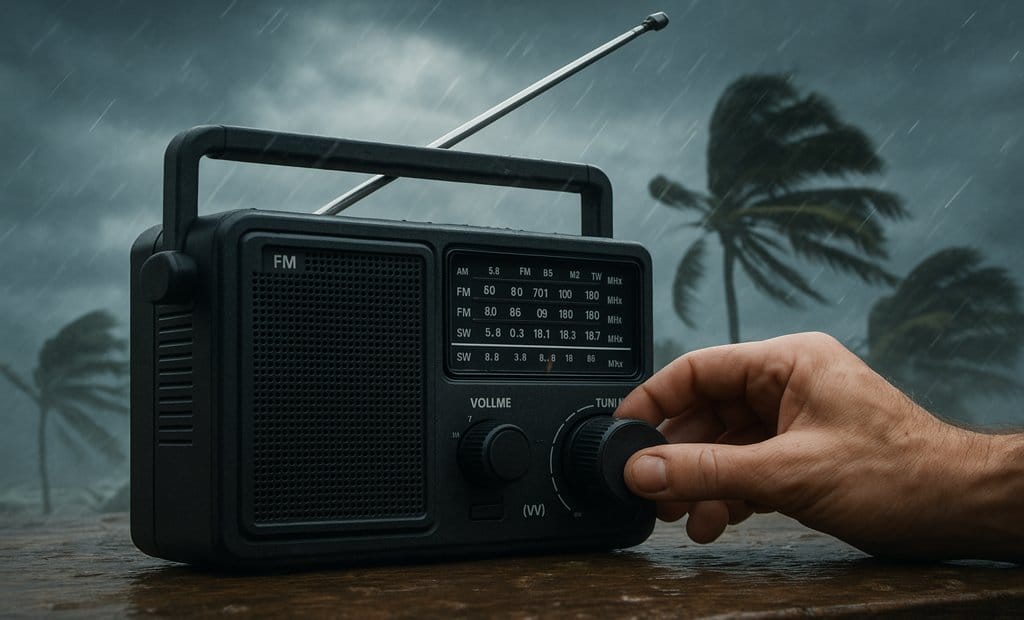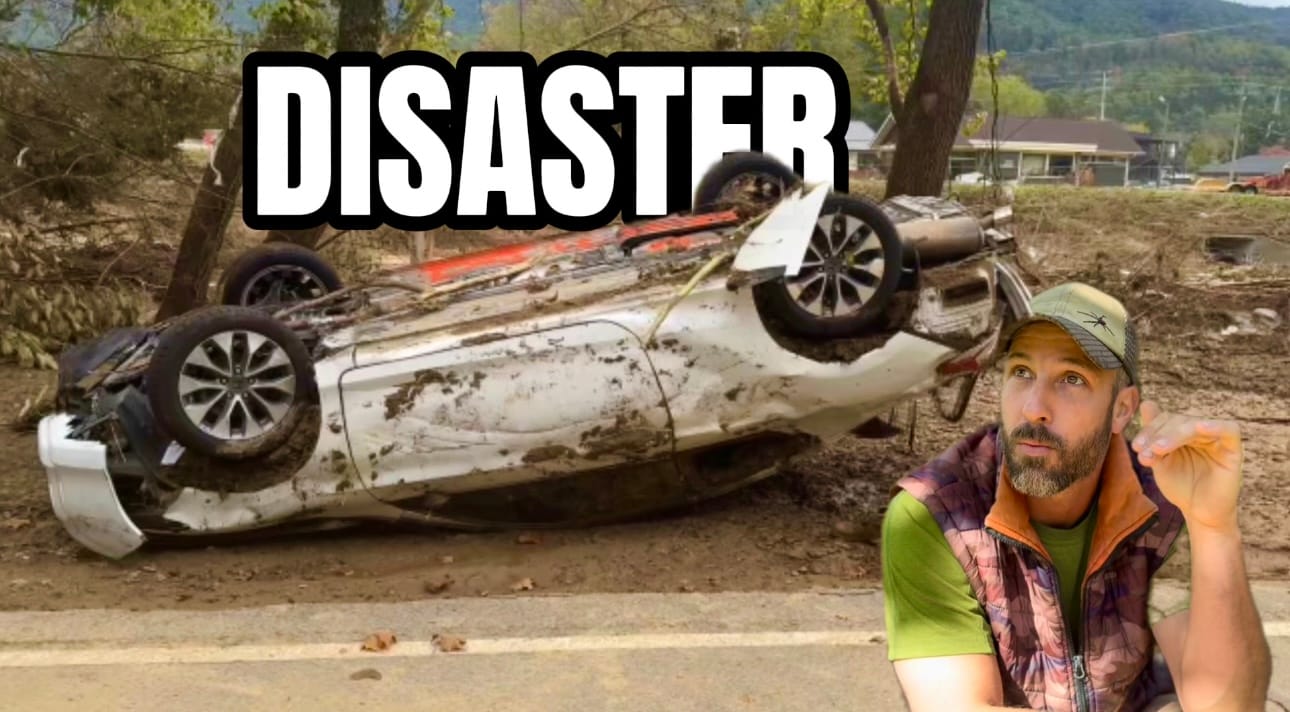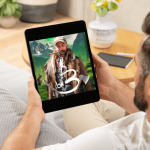
Choosing the best prepper radio could save your life when the grid goes down. Here’s what I use, what to avoid, and field-tested tips for staying connected.
Where I live, we’ve only gone a few days without power, but that’s all it takes to realize how crucial off-grid communication really is. My buddies and I regularly test out our Baofeng radios to make sure we can reach each other during emergencies. I do have to hike or bike to the top of my mountain to hit everyone some of them are 25 miles out but it works. During one storm, the power went out for several days, and I was able to contact my parents using the radio since we all live on the same property.
The most dire situation we used them in was during our time volunteering in North Carolina during Hurricane Helene. That was a real wake-up call. It was like the Wild West out there. National Guard and FEMA weren't present yet, and local emergency services were overwhelmed and doing everything they could. Roads were washed out, entire neighborhoods had rivers instead of creeks in their front yards, and chaos reigned. We used our radios to coordinate oxygen tank deliveries, get food, medicine, fuel, diapers and various other supplies to stranded families, and help people reconnect. Those radios were many people’s lifeline.
Let’s make sure you’ve got that lifeline too.

During a disaster, communication is survival. Whether you're getting storm updates, coordinating with your team, or calling for help, the ability to send and receive information can mean the difference between smart decisions and blind guesses.
According to FEMA, 60% of people believe emergency responders will reach them within three hours after a disaster—but response times often exceed 72 hours in major events [source: FEMA.gov]. That’s a dangerous assumption.
Let’s talk about what to look for and how to build your own radio setup so you’re never caught flat-footed.
Not all radios are created equal. A $20 walkie-talkie from Walmart isn’t going to cut it when you need to reach someone across town or monitor emergency frequencies. Here’s what to look for:
Want to see my full comms kit breakdown? Check out my video on emergency communications on ON3 YouTube
I don’t recommend gear I haven’t punished in the field. These radios have been through rain, dirt, and even a river dunk or two.

You don’t need to be a comms nerd to be prepared. Just follow these basics:
If the lights went out tomorrow, would you know which frequency to tune in to for updates?
I once led a weekend survival challenge where one of our guys brought a cheap "survival radio" that turned out to be... a flashlight with a speaker. We couldn't reach him after a storm rolled in. When he finally got back to camp, soaked and frustrated, he admitted he bought it because it had 2,000 Amazon reviews.
That’s why reviews aren’t everything.
Another time, I brought a Baofeng with a dead battery and no spare. Rookie move. Now I keep a backup battery, and I rotate my comms gear quarterly.
Pro Tip:
Never trust a single piece of gear. Always have backups and test often.
Want to see how I test gear under real stress? Subscribe to my Patreon
You only need a license if you plan to transmit on ham frequencies. You can always listen without one and in an emergency, who cares? The government is not going to get you and the radio nerds wont be hunting you down.
The Midland ER310. No license, easy to use, multiple power options.
It really depends on the terrain, antennas, power etc. FRS: ~1 mile, GMRS: ~5 miles, Ham: up to 100+ miles with repeaters. I have spoken loud and clear to a buddy 20+ miles away using a cheap baofeng with a j pole antenna.
In a crisis, your phone won’t help if the towers are down. A solid prepper radio setup is one of the most overlooked yet critical pieces of any bugout plan. You don’t need a closet full of gear, just the right tools and the discipline to use them.
Start with a Baofeng, program your channels, and run monthly checks. Build your network now, not after the disaster.
Want more tactical readiness tips? Subscribe to my Substack at On3Ready, grab my gear checklists, and check out more resources at GoOn3.com.
Let me leave you with a question:
If the grid went down right now, who would you contact first—and could you reach them without a phone?
Let’s go On3
Check Out My Recommended Gear and Supplies. Explore the gear and supplies I personally use and trust. When you purchase through my Amazon storefront and other affiliates I earn a small commission at no extra cost to you. These small commissions help support the creation of informative free content for you to enjoy.
Essential Links
Wazoo Survival Gear https://wazoosurvivalgear.com/?aff=ON3 (Discount code GOON32025)
Bear Forest Knives
On3 EDC https://www.bearforestknives.com/collections/production/products/on-three-edc
On3 Ulu https://www.bearforestknives.com/collections/production/products/pre-order-now
On3 Primitive https://www.bearforestknives.com/products/on-three-primitive-reserve-yours-now
Exotac https://www.exotac.com/?ref=7d2vkc2wfx (Discount code On3)
PNW Bushcraft https://www.pnwbushcraft.com/collections/waxed-canvas-bags/products/drawstring-cinch-pack-by-pnwbushcraft
Want more no-nonsense survival and prepper advice
Substack Subscribe at https://on3ready.substack.com/p/youtube for weekly newsletters and early threat warnings
YouTube https://www.youtube.com/@ONThree/videos
Patreon https://patreon.com/OnThree
Amazon Storefront https://www.amazon.com/shop/onthree?ref=prof_v_infl
Website GoOn3.com
Fitness Channel https://youtube.com/@fitonthree
Apparel https://on-three.creator-spring.com
Jason Salyer is a survivalist, strength coach, and the founder of the "On Three" brand. Known for practical, no-fluff advice, Jason blends real-world experience from field tests, faith-driven preparation, and family-focused self-reliance to help others live more intentionally. You can catch his weekly videos, survival gear reviews, and training challenges on YouTube and Substack.


